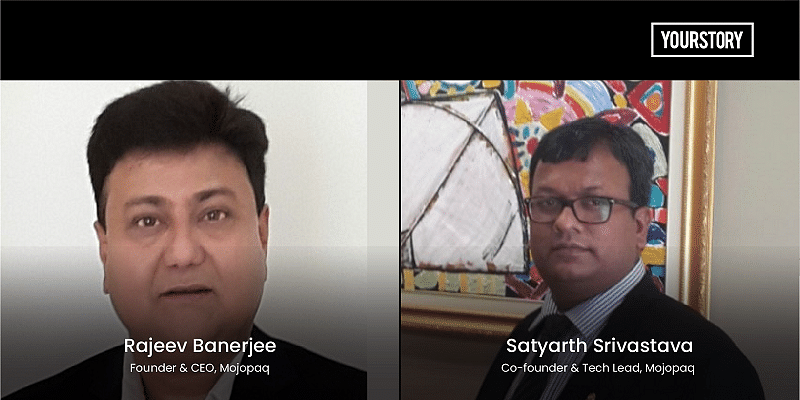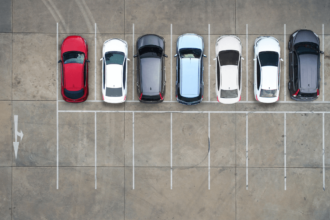Back in 2017-18, when the smartphone market was growing and there was a lot of conversion and convergence with consumers fast adopting technology, Rajeev Banerjee thought of addressing the biggest consumer fear – the smartphone battery running out of juice, in simpler words, battery all drained out.
As the world now navigates through apps and networks, and communities across the globe foster on the touchpoints of a smartphone, the fear of not being connected is real – and often riddled with anxiety.
Enter Gurugram-based consumer tech startup, MOJOPAQ by Rajeev Banerjee, Founder and CEO and Satyarth Srivastava, Co-Founder and Tech Lead, a startup that specifically addresses the problem of smartphone battery draining out with its novel product.
According to Rajeev, the problem with mobile chargers is that they keep us static at one place.
He hints at the irony that while on one hand, we are proud of the fact that we have transitioned from the age of landline phones to smartphones, and towards mobility and convenience, on the other hand, we are still held captive by a static mobile charger.
The next best alternative, read the power bank, has its own share of problems, Rajeev points out, while referring to the inherently thick and clumsy build of the device, which he says harks back to how a traditional phone was.
So, MOJOPAQ was born out of a vision to disrupt the inconvenient, traditional and orthodox space of mobile charging, marked by wires and ports with an innovative and transformative product.
“We understood that the market was large, smartphones have to be kept charged all the time, so the inconvenience part could be transformed in this particular industry. Convenience, mobility and tech — these were the three parts. And that’s how we reshaped and redefined and made it smart enough for our customers,” says Rajeev.
He is quick to add that it took them two years to understand the entire world map and market. “Apart from being innovative, our product had to solve the problem of convenience and mobility, and above all, it had to be liked by users. Finally, it had to be patented in our name. So, for the patents, we went through about 9,000 products globally etc. We designed something and then we went for a consumer survey. We did an initial generic survey in Mumbai, Delhi-NCR and Bengaluru, covering 932 smartphone users in the 18+ age group and we got a very positive response from the survey in terms of product validation,” recalls Rajeev.
The startup then came up with a small prototype, which they tested in various markets, primarily Mumbai, Delhi-NCR, Ahmedabad.
“We went to actual users on the field across top retail outlets selling high-end, premium kinds of accessories and smartphones. We took our prototype to airports, shopping malls etc, specifically at mobile charging stations at airports where people wait in queues to charge their phones. When we showed them our product, they were floored. Those are the kinds of typical touchpoints that we tracked for our consumer survey and where we showcased our product before the final leg of the production run,” explains Rajeev.
MOJOPAQ was then launched in February 2020.
Rajeev points out that the pandemic proved to be a “blessing in disguise” as the shut-down period prompted the makers to shift gears and consolidate their space with the second in line of product, MOJOSENSE. “MOJOSENSE is the same device, which now in addition to giving you mobility and convenience has a complete array of sensors, in terms of health sensors, which are embedded into the device,” says Rajeev.
If MOJOPAQ addresses the issue of mobility and convenience, MOJOSENSE has been envisioned to enhance user experience and engagement.
Essentially, it will be an easy-to-carry and convenient smart gadget, which will offer much more in terms of value-added services in terms of tracking health and other essential lifestyle parameters.
“Nobody is keen on vanilla products, and people are willing to pay if the product is right,” remarks Rajeev.

First-time category innovation
Innovigo Technologies Pvt Ltd’s MOJOPAQ is a techware venture and an innovation house disrupting the smartphone charging space with innovative global-first products. According to the startup, its unique platform not only provides essential charge in the most convenient manner, a first-time category innovation, but also helps track/monitor health, through an array of embedded sensors on the same device, thereby enhancing overall user experience and engagement. And all this goes into redefining the space of smartphone charging for the first time ever, not only in India but also globally, according to the startup.
The startup mainly focuses on the issue of battery drainage on smartphones, terming existing mobile chargers and power banks to be static, bulky, wired and cumbersome.
Its first launch, MOJOPAQ, addresses the core issue of inconvenience and mobility. Its soon to be launched second version, MOJOSENSE, will take care of the engagement part. Its next product plan is to utilise wind and light as a source of energy to charge, thereby reducing the dependency on the need for electricity and pivoting “limitless charge”.
The startup’s main revenue is from device sales, alliances and partnerships with cab aggregators, airlines, café chains, travel and tourism, institutions for product sales and product placements, revenues from service providers on the sensor platform and subscription sales in the future. As of now, the products are available pan India with over Rs 30,00,000+ revenues clocked. They have also tied up with HDFC bank, for product promotion across the bank base and are now looking forward to strategic partnerships with Axis Bank, Standard Chartered among others. The organisation is currently valued at $2.75 million.
“The biggest challenge was the design and the form factor while trying to deliver a convenient product to the customer. But having solved the problem of mobility and convenience, the bigger challenge was solving the need to bring in more technology in the same device, and yet keep it compact enough so as not to lose out on the novelty factor,” remarks Rajeev.
All these challenges are, however, internal to the startup, as there’s no external competition. As Rajeev points out, “we were not trying to replicate anybody else’s product and create something. With the application, our identity will now be stronger.”
The road ahead
In the future, the team plans to launch many more products and expand globally. It also aims to reach triple digit top line revenues in three years.
Creating a pool of patented, global-first products with consumer adoption on the heels will continue to be the anchoring plan. “We hope to be the market leader in this space globally and pivot a healthy association with leading tech brands,” says Rajeev.
Edited by Anju Narayanan











![[infographic]-digital-experience-–-the-differentiator-for-any-online-business](https://www.marketinginasia.com/wp-content/uploads/2022/06/24849-infographic-digital-experience-the-differentiator-for-any-online-business-150x150.png)




